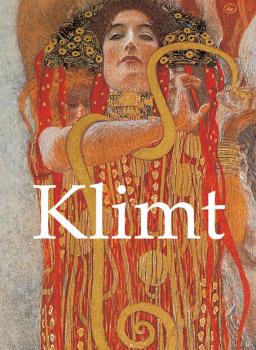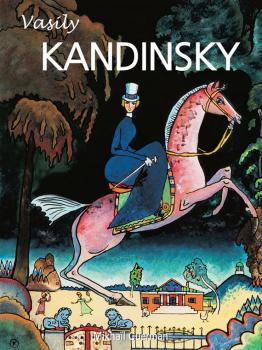ТОП просматриваемых книг сайта:
Иностранные языки
Различные книги в жанре Иностранные языки, доступные для чтения и скачиванияАннотация
Today still considered a “Bad Boy”, Pascin was a brilliant artist who lived and worked in the shadow of contemporaries such as Picasso, Modigliani, and several others. A specialist of the feminine form, his canvasses are as tormented as his party lifestyle. The artist, considered scandalous for the erotic character of his works, exhibited in numerous Salons, notably in Berlin, Paris, and New York.
Аннотация
Leonardo’s early life was spent in Florence, his maturity in Milan, and the last three years of his life in France. Leonardo’s teacher was Verrocchio. First he was a goldsmith, then a painter and sculptor: as a painter, representative of the very scientific school of draughtsmanship; more famous as a sculptor, being the creator of the Colleoni statue at Venice, Leonardo was a man of striking physical attractiveness, great charm of manner and conversation, and mental accomplishment. He was well grounded in the sciences and mathematics of the day, as well as a gifted musician. His skill in draughtsmanship was extraordinary; shown by his numerous drawings as well as by his comparatively few paintings. His skill of hand is at the service of most minute observation and analytical research into the character and structure of form. Leonardo is the first in date of the great men who had the desire to create in a picture a kind of mystic unity brought about by the fusion of matter and spirit. Now that the Primitives had concluded their experiments, ceaselessly pursued during two centuries, by the conquest of the methods of painting, he was able to pronounce the words which served as a password to all later artists worthy of the name: painting is a spiritual thing, cosa mentale. He completed Florentine draughtsmanship in applying to modelling by light and shade, a sharp subtlety which his predecessors had used only to give greater precision to their contours. This marvellous draughtsmanship, this modelling and chiaroscuro he used not solely to paint the exterior appearance of the body but, as no one before him had done, to cast over it a reflection of the mystery of the inner life. In the Mona Lisa and his other masterpieces he even used landscape not merely as a more or less picturesque decoration, but as a sort of echo of that interior life and an element of a perfect harmony. Relying on the still quite novel laws of perspective this doctor of scholastic wisdom, who was at the same time an initiator of modern thought, substituted for the discursive manner of the Primitives the principle of concentration which is the basis of classical art. The picture is no longer presented to us as an almost fortuitous aggregate of details and episodes. It is an organism in which all the elements, lines and colours, shadows and lights, compose a subtle tracery converging on a spiritual, a sensuous centre. It was not with the external significance of objects, but with their inward and spiritual significance, that Leonardo was occupied.
Аннотация
“I am not interested in myself as a subject for painting, but in others, particularly women…”Beautiful, sensuous and above all erotic, Gustav Klimt’s paintings speak of a world of opulence and leisure, which seems aeons away from the harsh, post-modern environment we live in now. The subjects he treats – allegories, portraits, landscapes and erotic figures – contain virtually no reference to external events, but strive rather to create a world where beauty, above everything else, is dominant. His use of colour and pattern was profoundly influenced by the art of Japan, ancient Egypt, and Byzantium. Ravenne, the flat, two-dimensional perspective of his paintings, and the frequently stylised quality of his images form an oeuvre imbued with a profound sensuality and one where the figure of woman, above all, reigns supreme. Klimt’s very first works brought him success at an unusually young age. Gustav, born in 1862, obtained a state grant to study at Kunstgewerbeschule (the Vienna School of Arts and Crafts) at the age of fourteen. His talents as a draughtsman and painter were quickly noticed, and in 1879 he formed the Künstlercompagnie (Artists’ Company) with his brother Ernst and another student, Franz Matsch. The latter part of the nineteenth century was a period of great architectural activity in Vienna. In 1857, the Emperor Franz Joseph had ordered the destruction of the fortifications that had surrounded the medieval city centre. The Ringstrasse was the result, a budding new district with magnificent buildings and beautiful parks, all paid for by public expenses. Therefore the young Klimt and his partners had ample opportunities to show off their talents, and they received early commissions to contribute to the decorations for the pageant organised to celebrate the silver wedding anniversary of the Emperor Franz Joseph and the Empress Elisabeth. In 1894, Matsch moved out of their communal studio, and in 1897 Klimt, together with his closest friends, resigned from the Künstlerhausgenossenschaft (the Cooperative Society of Austrian Artists) to form a new movement known as the Secession, of which he was immediately elected president. The Secession was a great success, holding both a first and second exhibition in 1898. The movement made enough money to commission its very own building, designed for it by the architect Joseph Maria Olbrich. Above the entrance was its motto: “To each age its art, to art its freedom.” From around 1897 onward, Klimt spent almost every summer on the Attersee with the Flöge family. These were periods of peace and tranquillity in which he produced the landscape paintings constituting almost a quarter of his entire oeuvre. Klimt made sketches for virtually everything he did. Sometimes there were over a hundred drawings for one painting, each showing a different detail – a piece of clothing or jewellery, or a simple gesture. Just how exceptional Gustav Klimt was is perhaps reflected in the fact that he had no predecessors and no real followers. He admired Rodin and Whistler without slavishly copying them, and was admired in turn by the younger Viennese painters Egon Schiele and Oskar Kokoschka, both of whom were greatly influenced by Klimt.
Аннотация
Erotic photo art has lost much of its exquisite soul since Playboy and other girlie monthlies repackaged the human body for mass-market consumption. Like much painting, sculpture and engraving, since its beginning photography has also been at the service of eroticism. This collection presents erotic photographs from the beginning of photography until the years just before World War II. It explores the evolution of the genre and its origins in France, and its journey from public distrust to the large audience it enjoys today.
Аннотация
Wassily Kandinsky (1866-1944) was a Russian painter credited as being among the first to truly venture into abstract art. He persisted in expressing his internal world of abstraction despite negative criticism from his peers. He veered away from painting that could be viewed as representational in order to express his emotions, leading to his unique use of colour and form. Although his works received heavy censure at the time, in later years they would become greatly influential.
Аннотация
Through his elegant brush paintings and masterful woodblocks, Katsushika Hokusai (1760–1849) became one of Japan’s most internationally-renowned artists. A master of Ukiyo-e art, he single-handedly transformed the art form from a simple style focused on courtesans and famous actors into a grander style depicting the beauty of nature seen through landscapes and wildlife. His style of art and subject evolved as many times as he changed his name, but Hokusai’s talent as an artist remained constant and his influential role in later art movements such as Art Nouveau and Impressionism remains eternal.
Аннотация
Wassily Kandinsky (1866-1944) was a Russian painter credited as being among the first to truly venture into abstract art. He persisted in expressing his internal world of abstraction despite negative criticism from his peers. He veered away from painting that could be viewed as representational in order to express his emotions, leading to his unique use of colour and form. Although his works received heavy censure at the time, in later years they would become greatly influential.
Аннотация
Chaïm Soutine (1893-1943), the unconventional and controversial painter of Belorussian origin, combines influences of classic European painting with Post-Impressionism and Expressionism. As a member of the Artists from Belarus, a group within the Parisian School, he created an oeuvre mainly consisting of landscapes, still lifes, and portraits. His individual style, characterised by displays of humour and despair and by use of luminous colours, makes him a modern master who is still little understood.
Аннотация
Salvador Dalí (1904-1989) is best known for his unique and striking style with an extraordinary repertoire reaching out across film, painting, photography, and sculpture. Whilst his name may be most commonly associated with Surrealism, Dalí consummately displayed mastery over such broad genres as classical, modernist, and Cubist styles. A crucial figure in art history, Dalí has inspired countless literary works and this edifying Best Of volume gives readers a fascinating insight into the life and career highlights of one of art’s most controversial and exciting pioneers.
Аннотация
Without a doubt, Katsushika Hokusai is the most famous Japanese artist since the middle of the nineteenth century whose art is known to the Western world. Reflecting the artistic expression of an isolated civilisation, the works of Hokusai – one of the first Japanese artists to emerge in Europe – greatly influenced the Impressionist and Post-Impressionist painters, such as Vincent van Gogh. Considered during his life as a living Ukiyo-e master, Hokusai fascinates us with the variety and the significance of his work, which spanned almost ninety years and is presented here in all its breadth and diversity.










